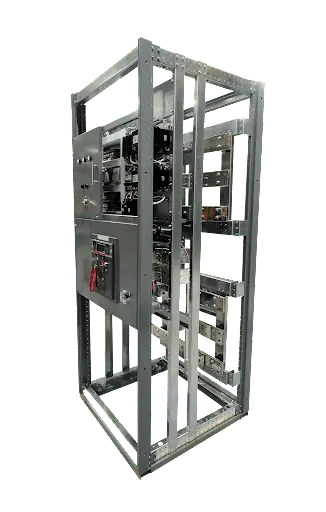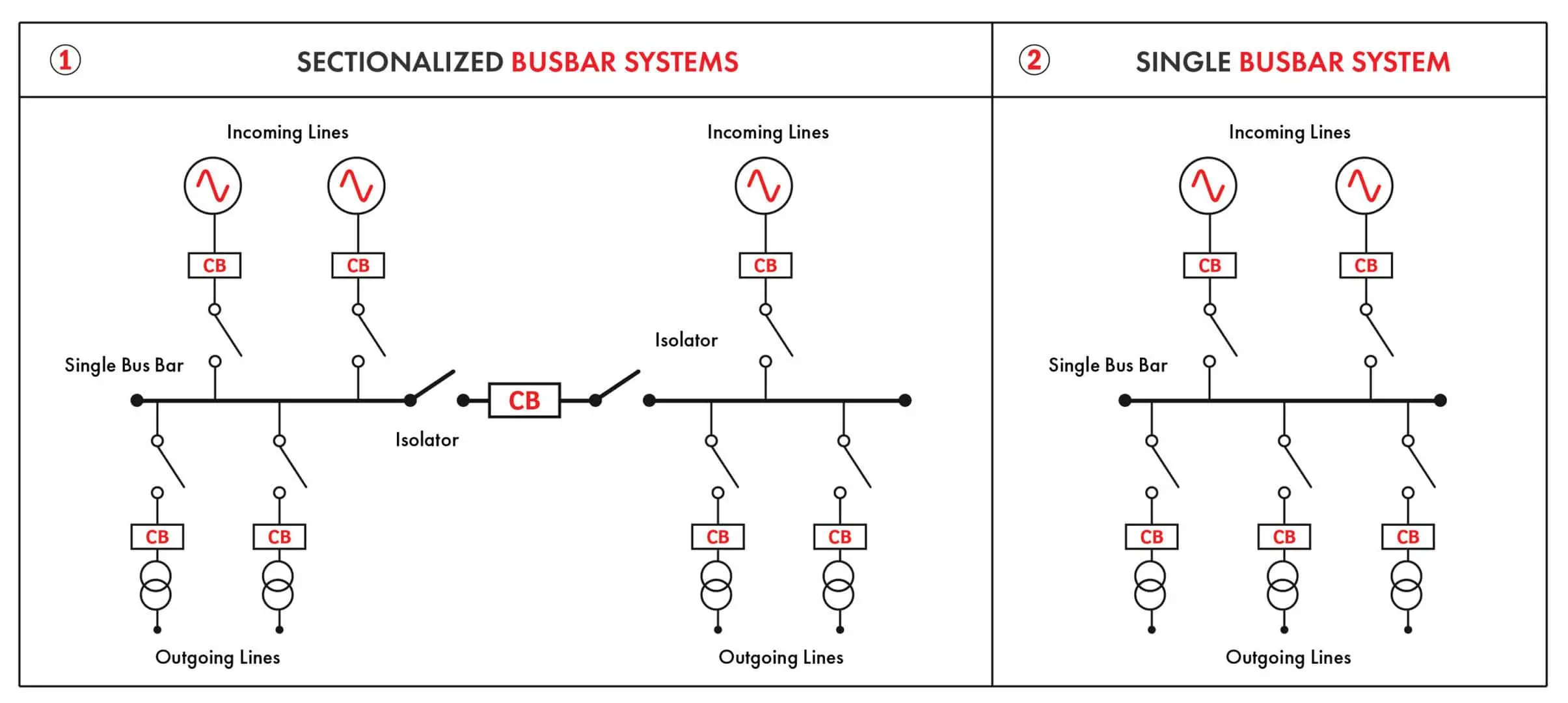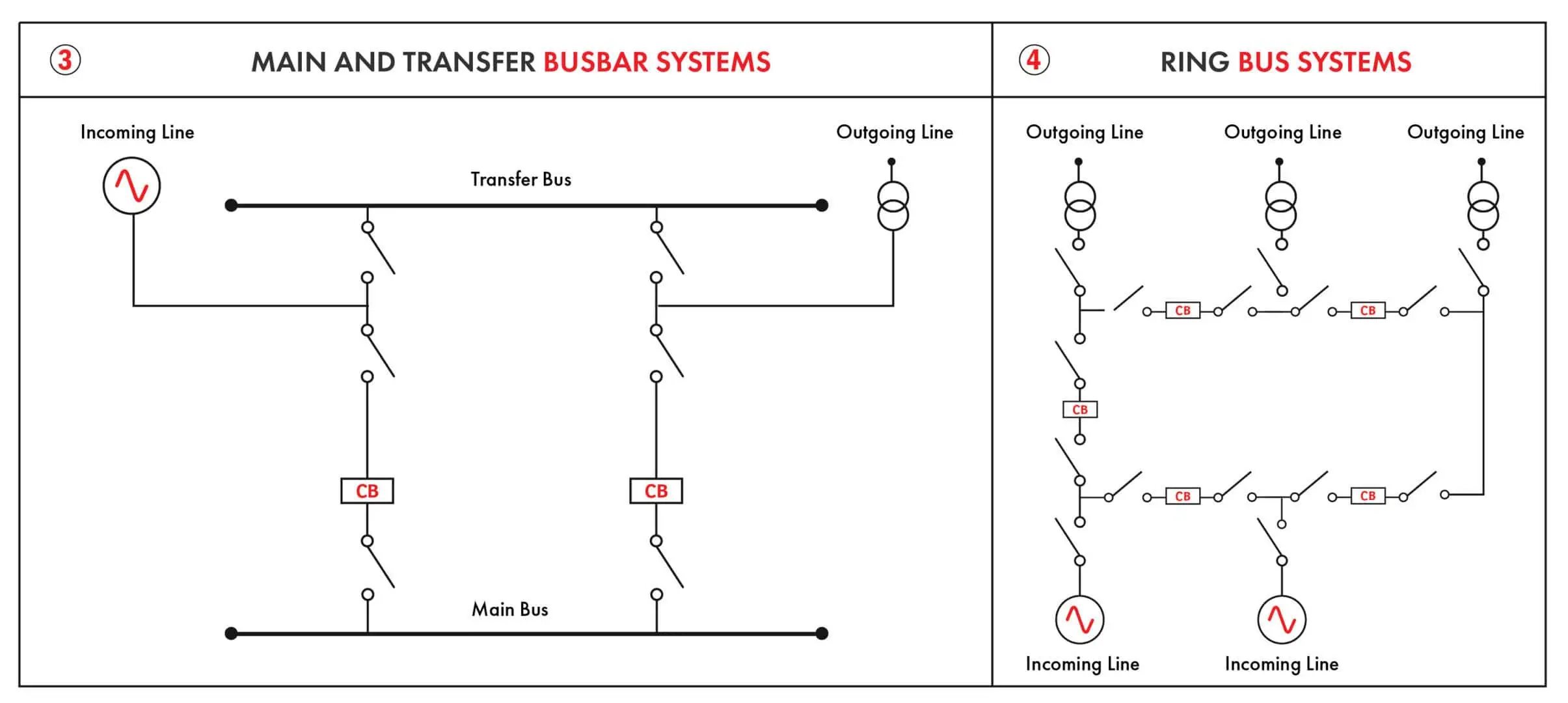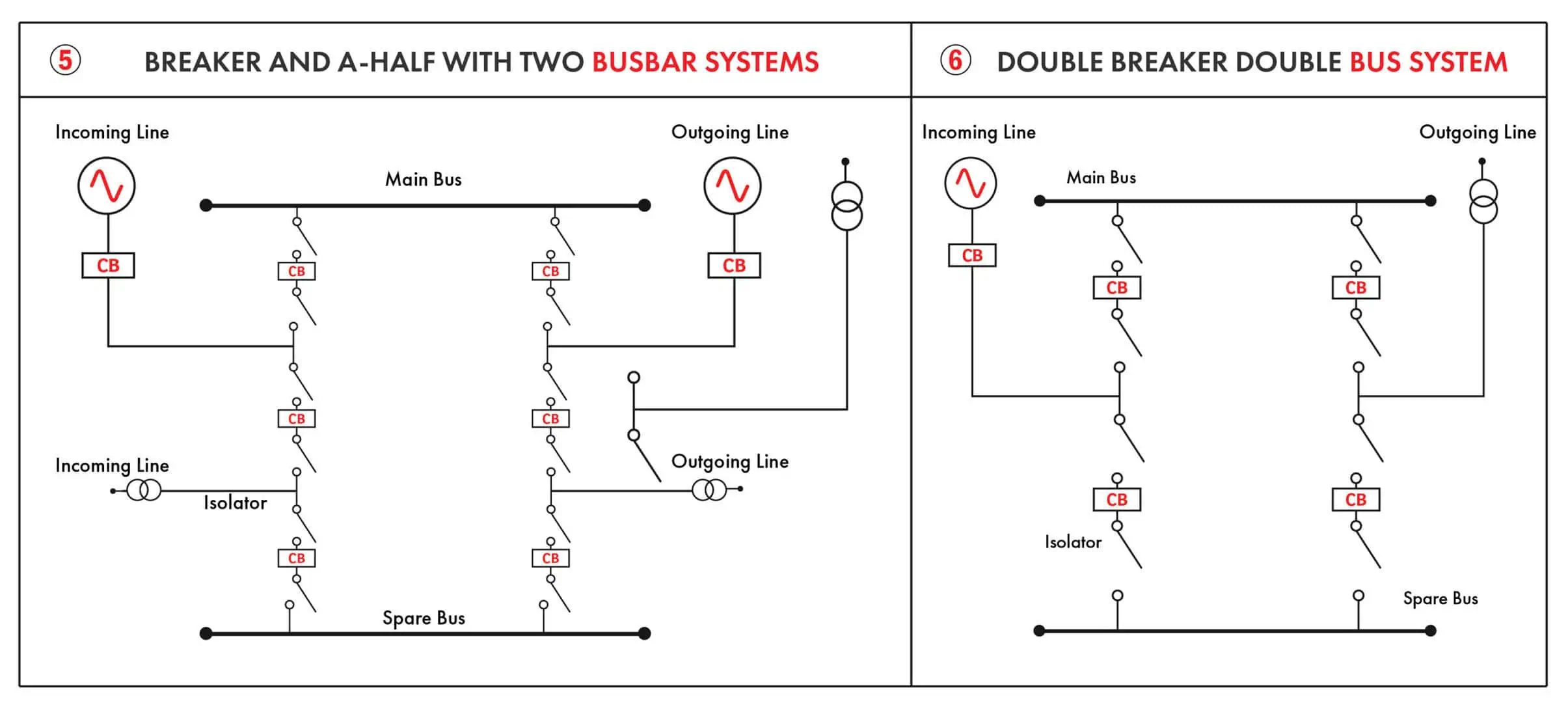Advanced Busbar Systems for Electrical Engineer Contractors
Unraveling Advanced Busbar Systems:
For Electrical Engineers, Electrical Contractors, and Technical Purchasing Agents
An Introduction
In the intricate landscape of modern power distribution, electrical engineer contractors find themselves navigating the complexities of innovative technologies.
Among these, advanced busbar systems stand out as vital components, playing a pivotal role in enhancing the efficiency and reliability of switchboards. This article unravels the significance of advanced busbar systems, serving as an indispensable guide for electrical engineer contractors seeking optimal power distribution solutions.
As technology evolves, so do the expectations and demands placed on power distribution systems. The introduction of advanced busbar systems represents advantages in terms of flexibility, efficiency, and overall performance. [1] Electrical engineer contractors need a comprehensive understanding of these systems to harness their full potential and deliver state-of-the-art solutions to their clients.
March 1, 2024

What is a Busbar?
A busbar is a metallic strip or bar that conducts electricity within a switchboard, serving as a common connection point for multiple circuits. Its primary function is to efficiently distribute electrical power from the main supply to various subsidiary circuits.
Busbars are flexible and adaptable to various electrical setups since their design and configuration change depending on the needs of a given application. Electrical engineer contractors need to be aware of the available busbar designs for power distribution and busbar system integration techniques, each designed to fulfill a particular purpose. Contractor selection criteria must consider the specific requirements of the project when selecting busbar systems, whether they be electrical panel busbar systems, busbar trunking systems, or creative power distribution designs.
Understanding Fundamentals of Busbar Systems
At the core of modern switchboard design, busbars play a crucial role in facilitating the efficient and safe distribution of electrical power.
Traditional Busbars
Power distribution systems have relied on copper or aluminum busbars for decades. Good conductivity and easy installation make them a dependable and cost-effective choice for different applications. Contractors need to be well-versed in the design principles and limitations of traditional busbars, especially when working with conventional electrical setups.
Busbar Trunking Systems
Busbar trunking systems represent a leap forward in power distribution technology. These systems consist of compact and prefabricated busbars enclosed in protective casings. Electrical engineer contractors must understand the advantages of busbar trunking, such as flexibility in design, scalability, and enhanced safety features.
Innovative Configurations for Power Distribution Efficiency
Advanced busbar technology has led to power distribution efficiency-maximizing arrangements. These configurations may include a Ring Bus system, segregated-phase busbars, or other custom designs. Electrical engineer contractors should investigate these innovative methods to improve power distribution, energy efficiency, and system performance.
Busbar Material Selection
Busbar material is crucial to switchboard design. Copper and aluminum are the most popular materials and have different benefits. Contractors must consider conductivity, corrosion resistance, and cost when choosing busbar materials.
Types of Busbar Arrangements in Power Distribution Systems
Each busbar arrangement for Power Distribution has its advantages and considerations, and electrical engineering contractors play a pivotal role in determining busbar installation best practices for efficient and reliable power distribution systems.
Sectionalized Busbar Systems:
The idea of segmentation is introduced by sectionalized busbar systems, which enable the isolation of parts for upkeep or in the event of a fault. This gives the user more control over how the system operates and improves power distribution flexibility and dependability. Electrical engineering contractors can use sectionalized busbars to increase operating and maintenance efficiency.
Single Busbar System:
The single busbar system is a straightforward configuration with a single set of busbars supplying power to the connected circuits. While simple, it lacks redundancy, making it less resilient in the event of a fault.
Main and Transfer Busbar Systems:
Main and transfer busbar systems incorporate a primary busbar and a secondary (transfer) busbar. The primary busbar supplies electricity, while the transfer busbar easily takes over during maintenance or faults.
Ring Bus Systems:
Ring bus systems create redundant power distribution channels with closed busbar loops. If the bus or circuit breaker fails, the confined circuit is lost. Electrical engineer contractors could investigate ring bus systems for critical infrastructure applications that require uninterrupted power.
Breaker and A-Half with Two Busbar Systems:
It introduces redundancy by having breakers associated with each bus section. The impacted bus section can be isolated in the case of a problem while keeping the power supply to the remaining portions of the system intact. This design is a flexible option because it strikes a compromise between operational simplicity and redundancy.
Double Breaker Double Bus System:
Two distinct busbars and breakers for each circuit provide a prominent level of redundancy in the double breaker double bus system. Because of this configuration, one busbar may be maintained while the other is in use. This robust design is something that electrical engineer contractors should take into consideration for situations where operational flexibility and optimum dependability are critical.
Busbar Material Selection
Optimal performance and longevity in switchboard systems depend on effective busbar material selection ranging from copper and aluminum to innovative alloys.
Delve into various materials used in busbar construction, evaluating their conductivity, durability, and resistance to environmental factors. [2] Copper is used for superior conductivity and durability, aluminum for lightweight versatility, and specialized alloys for enhanced corrosion resistance.
With a deep understanding of material properties, navigate challenges and ensure chosen materials withstand the demands of the intended application.
In addition to these stalwarts, the busbar landscape incorporates specialized alloys designed for enhanced corrosion resistance. Notably, EPD's standard involves tin plating over silver plating, a choice influenced by both functionality and aesthetics.
Silver plating tarnishes rapidly, imparting an aged appearance even to new bus bars. In contrast, tin plating boasts durability without succumbing to tarnishing, aligning with EPD's commitment to both performance and visual appeal.
Furthermore, considerations extend to additional coatings like epoxy, providing an extra layer of protection and heat shrink applications. Delving into these nuances ensures a comprehensive understanding, empowering decision-makers to navigate challenges and ensure the selected materials align with the demands of the intended application.
When deciding between silver and tin plating for busbars, factors beyond aesthetics come into play. Silver plating, known for its superior conductivity, might be favored in applications prioritizing optimal electrical performance.
On the other hand, if visual appeal, corrosion resistance, and a tarnish-free surface are paramount, the durability and aesthetic longevity offered by tin plating make it a compelling choice.
Understanding the specific requirements of the application, including environmental factors and performance expectations, guides the thoughtful selection between these plating options.
Thermally Rated vs. Current Density Rated Bus Bars: Navigating Current Capacities
Thermally Rated Bus Bars
Higher Current Carrying Capacity:
A thermally rated bus bar, when rigorously tested and verified, exhibits the ability to conduct more current than a current density-rated counterpart of the same size. This is attributed to the careful consideration of the bus bar's heat dissipation capabilities in its thermal rating.
Heat Management:
Effective heat dissipation is pivotal for the reliability and longevity of thermally rated bus bars. The bus bar's thermal resistance, a key factor influencing its ability to manage heat, significantly impacts its current carrying capacity.
Current Density-Rated Bus Bars
Based on Cross-Sectional Area:
Current density ratings, such as the 1000 amperes per square inch for copper bus bars, rely on the cross-sectional area of the bus bar. This rating provides a conservative estimate of its current carrying capacity.
Material and Dimensions:
The material (e.g copper or aluminum) and dimensions of the bus bar are critical considerations influencing its current density rating.
Testing of Thermally Rated Bus Bars: Ensuring Performance Under Stress
Thermally rated bus bars undergo rigorous testing according to UL standards to validate their performance and safety. Key tests include:
Ampacity Testing (Rated Current Test or Heat Rise Test):
This crucial test involves running a specified amperage through the bus bar and measuring the heat rise using thermocouples. It ensures that the bus bar maintains an appropriate heat rise for its application, providing real-world performance insights.
HiPot Testing (Dielectric Breakdown Test):
HiPot testing confirms proper electrical isolation between conductors. It involves applying a specific voltage to the conductor and verifying the absence of an electrical path between adjacent conductors, ensuring safety and performance under extreme scenarios.
Partial Discharge Testing:
Critical for long-term performance verification, this test measures arcing between the conductor and insulation, identifying potential inefficiencies. Excessive arcing can erode insulation, leading to power transfer inefficiencies or total insulation failure.
UL Standards and Protocols:
Manufacturers adhere to UL standards like UL 857 to ensure comprehensive testing and certification for bus bars and associated fittings, guaranteeing safety, reliability, and regulatory compliance.
In summary, thermally rated bus bars, backed by robust testing protocols, can effectively handle higher currents compared to their current density-rated counterparts.
These tests, encompassing ampacity, HiPot, and partial discharge testing, are vital for ensuring the safety, reliability, and optimal performance of thermally rated bus bars in diverse real-world applications. Adherence to UL standards remains a cornerstone for maintaining industry-leading quality and safety benchmarks.
Busbar Trunking Systems
A busbar trunking system distributes electricity by use of a series of copper and aluminum bus bars that are housed in an appropriate enclosure that offers an important level of security against the infiltration of foreign objects.
The modular designs empower the contractors to deliver efficient and high-performance electrical solutions. Compared to hard-wired systems, on-site installation times are shorter, which results in financial savings. It offers greater design freedom as well as adaptability to future changes. Busbar's simplicity makes cost estimation simple, both during the design and estimating phases and during on-site installation.
Installation Best Practices
Effective installation practices are pivotal in ensuring the longevity and optimal performance of busbar systems in switchboards.
Electrical engineering contractors must pay meticulous attention to critical aspects such as proper storage of busbar assemblies to prevent damage or deformities.
Additionally, precise techniques in the installation of cable end boxes and a thorough understanding of the nuances of vertical installation of busbar trunking are imperative.
These practices not only guarantee the physical integrity of the system but also contribute to its seamless operation, assuring contractors of a reliable and enduring electrical infrastructure.
Adhering to these best practices not only mitigates familiar challenges but also upholds safety standards during installation, promoting a secure and efficient electrical setup. [3]
Innovations in Busbar Technology
Delving into the realm of busbar technology innovations unveils a landscape of continuous improvement. The latest advancements focus on enhancing efficiency and performance, incorporating features like smart monitoring, real-time analytics, and self-diagnostic capabilities. [4] These innovations not only elevate the reliability of electrical systems but also empower electrical engineering contractors with innovative tools for seamless power distribution solutions.
Integration with Switchboards
The seamless integration of advanced busbar systems extends to several types of switchboards, including UL 891-listed switchboards.
This integration represents a sophisticated convergence of technologies, ensuring compatibility with industry standards for enhanced safety and performance.[5] Busbar systems in switchboards leverage the electrical distribution system capabilities to achieve a robust and compliant power distribution infrastructure.
This technical integration not only aligns with safety regulations but also empowers contractors to deliver innovative solutions that meet the stringent requirements of modern electrical systems.
Considerations for Future-proofing
Future-proofing busbar installations necessitates a strategic approach. Electrical engineering contractors should consider factors like scalability, compatibility with emerging technologies, and flexibility in system configurations. By aligning installations with future electrical distribution needs, contractors ensure longevity and adaptability, making their projects resilient to evolving industry landscapes.
In Summary:
In conclusion, embracing advanced busbar systems in switchboards is paramount for electrical engineering contractors seeking optimal power distribution solutions.
The discussed innovations, integration capabilities, and considerations for future-proofing underscore the importance of staying abreast of technological advancements.
By incorporating these insights, contractors can navigate the complexities of modern power distribution with confidence, ensuring sustainable and efficient electrical infrastructure.
References
- Bedkowski, Mateusz, et al. "Coupled numerical modeling of power loss generation in busbar system of low-voltage switchgear." International journal of thermal sciences 82 (2014): 122-129.
- Migliavacca, Gianluigi, ed. Advanced technologies for future transmission grids. Springer Science & Business Media, 2012.
- Wen, H., and Weidong Xiao. "Design and optimization of laminated busbar to reduce transient voltage spike." 2012 IEEE International Symposium on Industrial Electronics. IEEE, 2012.
- Vincent, Timothy A., et al. "A smart cell monitoring system based on power line communication—optimization of instrumentation and acquisition for smart battery management." IEEE Access 9 (2021): 161773-161793.
- Esser, Dipl-Ing Wolfgang. "Busbar Component Adapters for modern industrial control panels." VER4300-960GB Moeller GmbH (2007).




